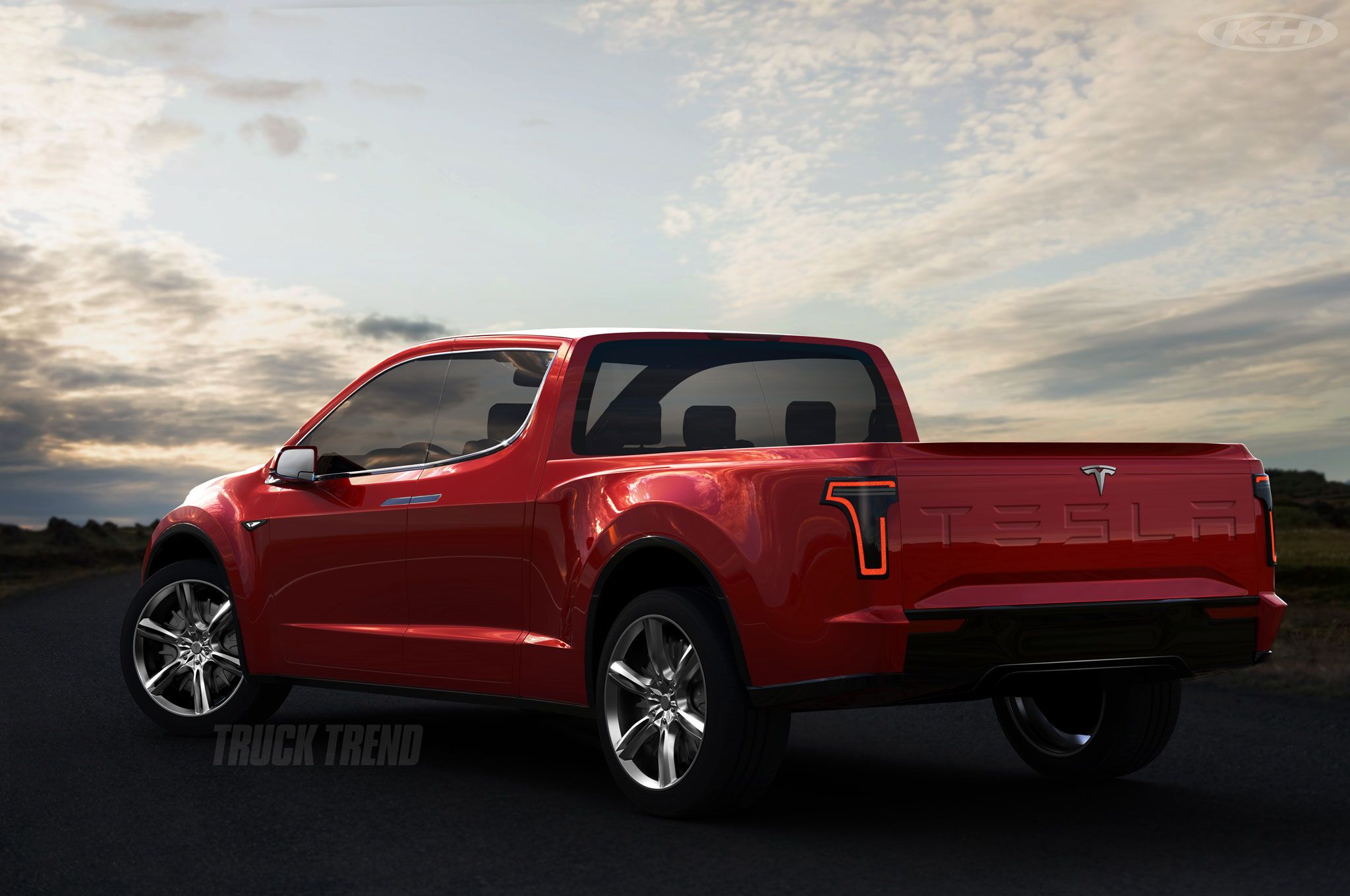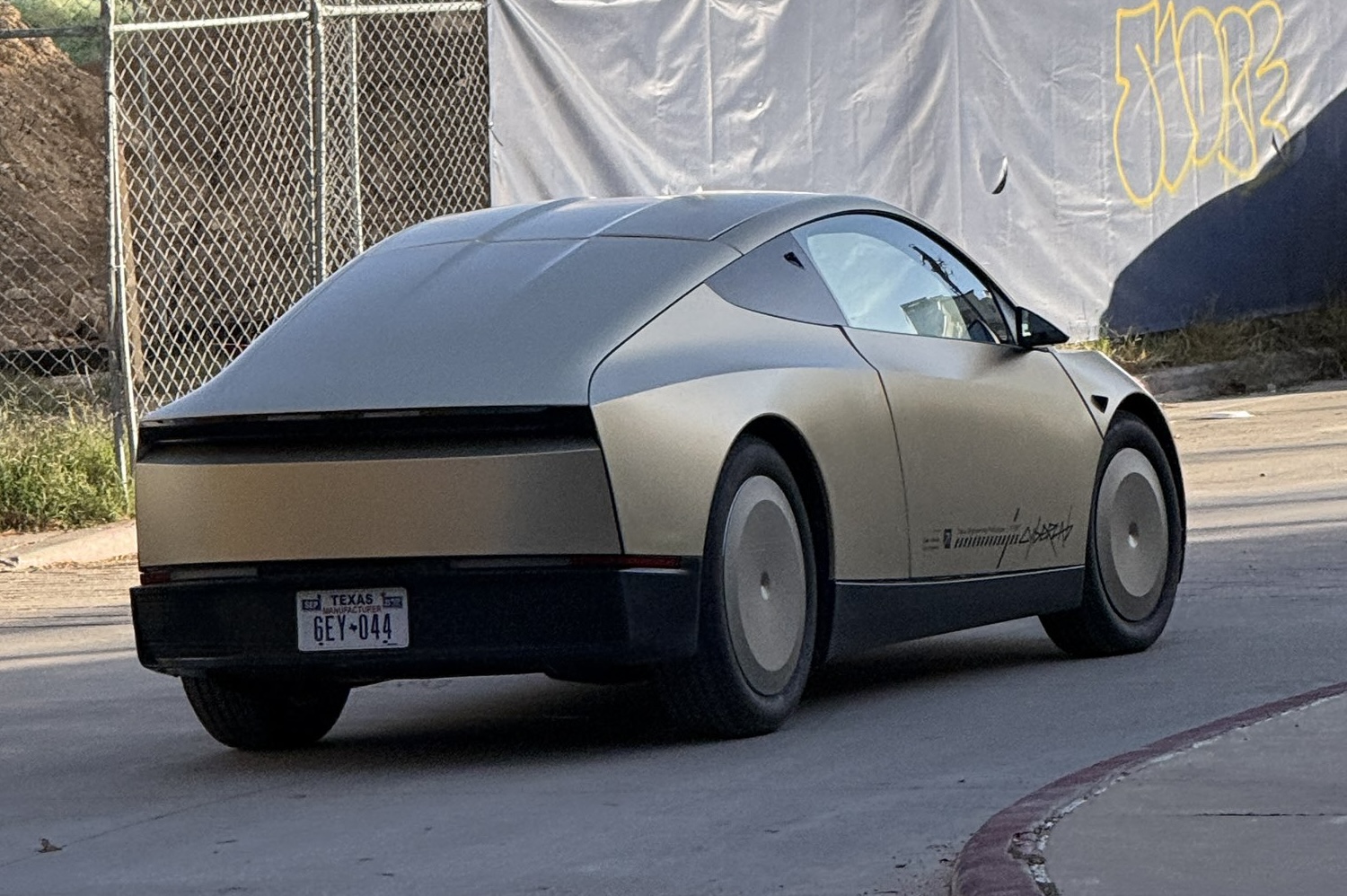News
Adoption of Tesla’s electric truck will be driven by regulation

It’s expected that the commercial trucking industry will begin to transform in the same way that the passenger automotive industry has. Fuel efficiency has become a new priority and electrification is now the go-to plan for achieving higher MPGs in heavy trucking. In much the same way that regulations pushed trucking towards lower pollution at the expense of efficiency in the 1970s, today’s trucking paradigm is seeing a push for more efficiency. At what expense?
A new report from Ravi Shanker at Morgan Stanley urges investors to consider electric and self-driving commercial trucking as an opportunity. Shanker says that regulations and economics will drive the industry towards electrification and autonomous technologies. The analyst says that this could happen as early as 2020, which is when new federal fuel economy regulations on heavy-duty vehicles begin to really gather steam. Although efficiency gains will be had with electrification and self-driving, Shanker makes it clear that this will be secondary to the demand created by regulatory pressure.
As usual, we look to California for a glimpse of what could be coming. California’s Sustainable Freight Action Plan calls for 100,000+ zero-emissions trucks to be on the road by 2030 in that state. There is debate as to whether this plan is realistic, but federal standards are also playing a large role. The U.S. Environmental Protection Agency (EPA) and the National Highway Traffic Safety Administration (part of the federal Department of Transportation) have proposed emissions and fuel economy standards for heavy-duty vehicles. The first of these began with the 2014 model year.
For our purposes, the regulations affecting “combination tractors” (aka “tractor-trailer” or “18 wheeler”) models are pertinent. The 2018 standards are relatively loose and most in the industry believe they are achievable, but the EPA and NHTSA have proposed further standards to begin in 2021, with incremental increases thereafter through to 2027. The goals are largely aimed towards lower CO2 emissions with reductions of about four percent (depending on the vehicle type) being the goal. The reduction is not the issue with industry insiders, however, it’s the test cycle to be used, which some argue is less realistic and which disfavors other emissions that also have requirements to be met. This Phase 2 of the federal efficiency standards for heavy trucks is not yet finalized, but will very likely be the driving force behind national changes in trucks.
Equating these changes into standard numbers that the general public would understand is difficult. Heavy-duty trucks can range in fuel efficiency from 20 mpg or better down to 2-3 mpg. For most tractor-trailer combinations, MPG averages of 4-9 mpg are the norm, depending on load, tractor type, and area of operation. Most analysts calculate efficiency using fuel use in tons per mile with a relatively long distance (100-500 miles) being the average. Using this method, for example, in my time driving a tractor pulling a refrigerated trailer across all 48 states, my fuel economy average was about average for that sector of the industry at roughly 60 ton-miles per gallon. Today, these numbers are slightly higher, according to the latest U.S. Transportation Energy book. Using this method of calculation, a 2015 Toyota Prius is about a third as efficient at moving freight as was my truck.
This doesn’t mean there isn’t room for improvement, of course. There are more companies than Tesla working towards deleting the smoke stacks from big trucks.
In Europe, Volvo trucks is working hard towards a zero-emissions (at the tailpipe anyway) trucking solution with several approaches being tested. An overhead tram-like charging system has been deployed for a short stretch of highway in Sweden, aiming to improve plug-in trucks’ range in EV mode. Short-haul battery electrics and two different versions of autonomous (or semi-autonomous) systems are also being tested.
Here in the States, Volvo’s Mack Trucks is working on a handful of electrification options for heavy-duty drivetrains. So is Daimler (Freightliner, Western Star in the U.S.). Startups like Nikola also have eyes on this electric trucking future. Other startups have hoped to get into the mix as well, but the failure rate is high with companies like Smith Electric, Vision Industries, and Boulder Electric having designed and marketed innovative commercial truck options that ultimately never caught on.
Meanwhile, the largest maker of electric heavy vehicles is Chinese maker BYD, who branched out from making gadget batteries into building electric buses, trucks, and more. They are currently filling contracts internationally for buses and trucks in places as disparate at California, Malaysia, and Europe. BYD builds battery-electric, hydrogen fuel cell electric, plug-in hybrid, and hybrid drivetrains and machines for several commercial market sectors.
So we can guarantee that changes to the trucking industry are coming, but no one can say how fast or how much change that will be. Current federal regulations will drive the industry forward until 2018 and it’s likely that new standards will be in place to keep carrying change forward after that. California’s ambitious plans for adopting electric trucks will be largely regulation and incentive driven, but that has down sides as well. Many of the startups we’ve seen who’ve created electrified big rigs or delivery trucks ultimately failed when the incentives began to dry up.
For Tesla, this could mean that the financial case for the Tesla Semi will need to be more economics-based and less dependent on single market, incentives-based plans. This means that Elon and Co should be looking beyond California and it’s 100,000 vehicle plans into a broader market. We’ll discuss the potential economic case for a Tesla Semi in a future editorial.

Elon Musk
Delaware Supreme Court reinstates Elon Musk’s 2018 Tesla CEO pay package
The unanimous decision criticized the prior total rescission as “improper and inequitable,” arguing that it left Musk uncompensated for six years of transformative leadership at Tesla.

The Delaware Supreme Court has overturned a lower court ruling, reinstating Elon Musk’s 2018 compensation package originally valued at $56 billion but now worth approximately $139 billion due to Tesla’s soaring stock price.
The unanimous decision criticized the prior total rescission as “improper and inequitable,” arguing that it left Musk uncompensated for six years of transformative leadership at Tesla. Musk quickly celebrated the outcome on X, stating that he felt “vindicated.” He also shared his gratitude to TSLA shareholders.
Delaware Supreme Court makes a decision
In a 49-page ruling Friday, the Delaware Supreme Court reversed Chancellor Kathaleen McCormick’s 2024 decision that voided the 2018 package over alleged board conflicts and inadequate shareholder disclosures. The high court acknowledged varying views on liability but agreed rescission was excessive, stating it “leaves Musk uncompensated for his time and efforts over a period of six years.”
The 2018 plan granted Musk options on about 304 million shares upon hitting aggressive milestones, all of which were achieved ahead of time. Shareholders overwhelmingly approved it initially in 2018 and ratified it once again in 2024 after the Delaware lower court struck it down. The case against Musk’s 2018 pay package was filed by plaintiff Richard Tornetta, who held just nine shares when the compensation plan was approved.
A hard-fought victory
As noted in a Reuters report, Tesla’s win avoids a potential $26 billion earnings hit from replacing the award at current prices. Tesla, now Texas-incorporated, had hedged with interim plans, including a November 2025 shareholder-approved package potentially worth $878 billion tied to Robotaxi and Optimus goals and other extremely aggressive operational milestones.
The saga surrounding Elon Musk’s 2018 pay package ultimately damaged Delaware’s corporate appeal, prompting a number of high-profile firms, such as Dropbox, Roblox, Trade Desk, and Coinbase, to follow Tesla’s exodus out of the state. What added more fuel to the issue was the fact that Tornetta’s legal team, following the lower court’s 2024 decision, demanded a fee request of more than $5.1 billion worth of TSLA stock, which was equal to an hourly rate of over $200,000.
Delaware Supreme Court Elon Musk 2018 Pay Package by Simon Alvarez
News
Tesla Cybercab tests are going on overdrive with production-ready units
Tesla is ramping its real-world tests of the Cybercab, with multiple sightings of the vehicle being reported across social media this week.

Tesla is ramping its real-world tests of the Cybercab, with multiple sightings of the autonomous two-seater being reported across social media this week. Based on videos of the vehicle that have been shared online, it appears that Cybercab tests are underway across multiple states.
Recent Cybercab sightings
Reports of Cybercab tests have ramped this week, with a vehicle that looked like a production-ready prototype being spotted at Apple’s Visitor Center in California. The vehicle in this sighting was interesting as it was equipped with a steering wheel. The vehicle also featured some changes to the design of its brake lights.
The Cybercab was also filmed testing at the Fremont factory’s test track, which also seemed to involve a vehicle that looked production-ready. This also seemed to be the case for a Cybercab that was spotted in Austin, Texas, which happened to be undergoing real-world tests. Overall, these sightings suggest that Cybercab testing is fully underway, and the vehicle is really moving towards production.
Production design all but finalized?
Recently, a near-production-ready Cybercab was showcased at Tesla’s Santana Row showroom in San Jose. The vehicle was equipped with frameless windows, dual windshield wipers, powered butterfly door struts, an extended front splitter, an updated lightbar, new wheel covers, and a license plate bracket. Interior updates include redesigned dash/door panels, refined seats with center cupholders, updated carpet, and what appeared to be improved legroom.
There seems to be a pretty good chance that the Cybercab’s design has been all but finalized, at least considering Elon Musk’s comments at the 2025 Annual Shareholder Meeting. During the event, Musk confirmed that the vehicle will enter production around April 2026, and its production targets will be quite ambitious.
News
Tesla gets a win in Sweden as union withdraws potentially “illegal” blockade
As per recent reports, the Vision union’s planned anti-Tesla action might have been illegal.

Swedish union Vision has withdrawn its sympathy blockade against Tesla’s planned service center and showroom in Kalmar. As per recent reports, the Vision union’s planned anti-Tesla action might have been illegal.
Vision’s decision to pull the blockade
Vision announced the blockade in early December, stating that it was targeting the administrative handling of Tesla’s facility permits in Kalmar municipality. The sympathy measure was expected to start Monday, but was formally withdrawn via documents sent to the Mediation Institute and Kalmar Municipality last week.
As noted in a Daggers Arbete report, plans for the strike were ultimately pulled after employer group SKR highlighted potential illegality under the Public Employment Act. Vision stressed its continued backing for the Swedish labor model, though Deputy negotiation manager Oskar Pettersson explained that the Vision union and IF Metall made the decision to cancel the planned strike together.
“We will not continue to challenge the regulations,” Petterson said. “The objection was of a technical nature. We made the assessment together with IF Metall that we were not in a position to challenge the legal assessment of whether we could take this particular action against Tesla. Therefore, we chose to revoke the notice itself.”
The SKR’s warning
Petterson also stated that SKR’s technical objection to the Vision union’s planned anti-Tesla strike framed the protest as an unauthorized act. “It was a legal assessment of the situation. Both for us and for IF Metall, it is important to be clear that we stand for the Swedish model. But we should not continue to challenge the regulations and risk getting judgments that lead nowhere in the application of the regulations,” he said.
Vision ultimately canceled its planned blockade against Tesla on December 9. With Vision’s withdrawal, few obstacles remain for Tesla’s long-planned Kalmar site. A foreign electrical firm completed work this fall, and Tesla’s Careers page currently lists a full-time service manager position based there, signaling an imminent opening.








